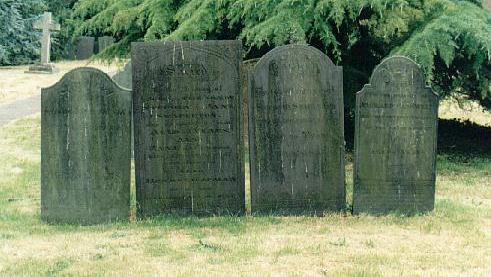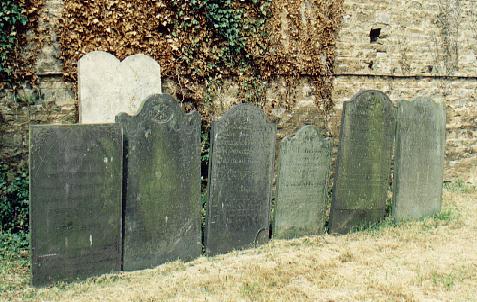|
Slate headstones Stone is the most prolific material for
memorials in English churchyards but among them can be seen many made of slate. It was not a familiar
sight before the 18th century although there are many fine examples in the Bourne area. Almost half of those in the churchyard at the Abbey
Church are made of slate and they have survived better than those made of stone
that have suffered considerably from weathering. Alongside them can be seen the beautifully carved slate examples which, although 150-200 years old, show less sign of deterioration.
His own headstone in the village churchyard at Rippingale commemorates his death on 14th August 1829 at the age of 82 and is also made of slate but this was the work of another local mason called Blackwell who may even have been his apprentice and if so, he did his master proud because the tablet is immaculately carved and is as clear today as it was when it was first chiselled although the gilt decoration that would undoubtedly have been used to embellish the lettering has long since faded:
The slate for the production of these headstones came originally from Swithland on the edge of the Charnwood Forest in Leicestershire but with the increase in communications by canal and rail, Welsh slate predominated in the latter part of the 18th century. But these memorials did not meet with the approval of everyone. The Rev Edward Trollope, secretary of the Lincolnshire Architectural Society, wrote in 1858 condemning both the slate headstones and the more elaborate stone memorials: "Country churchyards are filled with hideous slate slabs covered with a profusion of gold letters and flourishes, or else the ordinary white stones abounding in such absurd or repulsive devices as to make boys laugh, and Christian men sad when they look upon such an exhibition of folly, ignorance and vanity."
Go to: Main Index Villages Index |

